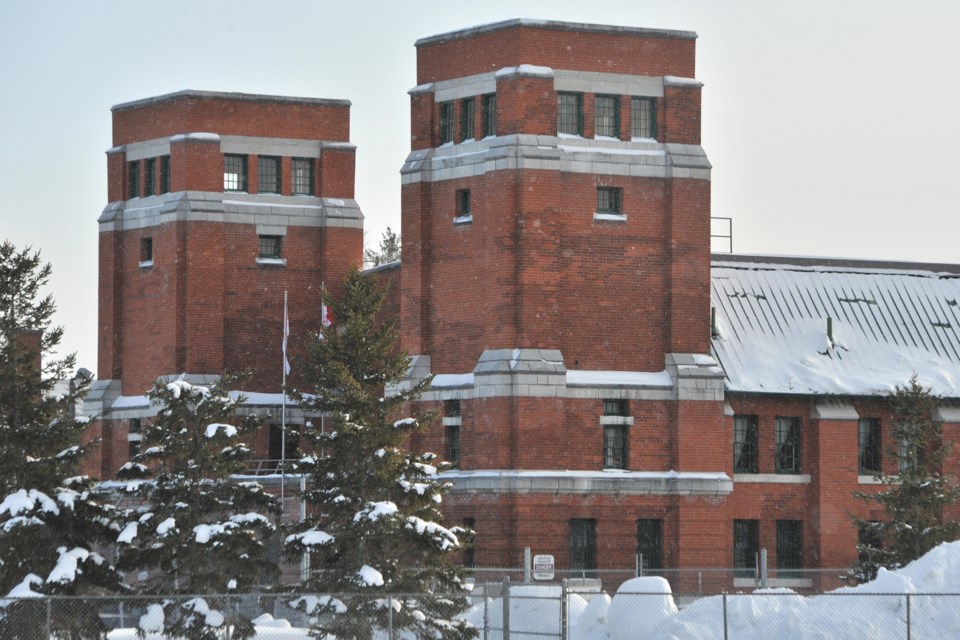From regiments to royalty, the Barrie Armoury has been a dominating presence in Queen’s Park — and the downtown community — for more than 100 years.
Over the years, its soldiers — currently the Grey and Simcoe Foresters, a unit of 31 Canadian Brigade Group — have borne witness to world wars, conflicts across the globe and peacekeeping missions. Its air, sea and army cadets have proudly worn their uniforms, with some of them later joining Canada’s military.
The stately structure — with its looming twin towers and large drill hall — seems more imposing the closer you get.
And it’s designed that way, according to a report by Parks Canada. It has recognized the Barrie Armoury as a federal heritage building.
“Its overall large scale, fortress-like appearance and materials… contribute a monumental presence to the open character of the (nearby) residential setting,” the report states, adding the materials and craftsmanship of the building “give it its militia appearance, including the towers and the three-arched entranceway leading to the drill hall.”
With war on the horizon — and like dozens of communities across Canada — Barrie was chosen to host an armoury and was part of the Department of Militia and Defence’s plan that saw an “unprecedented” 59 armouries erected, the report states.
The Barrie Armoury is one of 43 armouries built across Canada to one of five standard plans.
“With its straightforward utilitarian construction with little superfluous decoration, its simple, flexible plan with generous drill hall, armouries, classrooms, messes and quartermaster's stores, and its standard functional building materials of concrete, red brick, limestone trim and exposed steel roof trusses, the building reflects the progressive attitude of the period toward reform in the militia,” the Parks Canada report states.
After war was declared on Germany in September 1914, construction of the armoury began on the former armoury site at the southwest corner of Queen's Park, according to Su Murdoch, a heritage consultant based in Barrie.
Although not quite finished, the armoury was officially opened on Nov. 7, 1915.
It was built in the Gothic style for around $60,000.
Some 500,000 red bricks from William Freek’s local brickyard and another 100,000 buff bricks from Milton were used in the construction.
“It immediately housed the 650 members of the 76th Battalion. Queen's Park again became the scene of military drills and public gatherings as troops prepared for overseas duty and bid farewell to family," she says.
At the outbreak of the war, the armouries and drill halls across the country were invaluable as centres for the conscription and training of the overseas expeditionary force.
In 1936, a new chapter began when the Simcoe Foresters and the Grey Regiment merged to form the Grey and Simcoe Foresters. The Barrie Battalion, which calls the armoury home, was designated ‘B’ Company and the Grey Battalion was designated ‘A’ Company.
Today, the reserve unit’s members are trained infantrymen and ready to be fully integrated into the regular force units that they reinforce. The Barrie unit’s mission task is Arctic Response Company Group. It is trained in winter warfare operations and provides a commitment to a domestic operation in the high Arctic.
The Barrie Armoury has also won historical accolades from the City of Barrie. During the 2017 Heritage Awards held in December 2017, it was recognized for excellence in heritage in the ‘institutional’ category.
Over the years, the building has also been the site of many different (not necessarily military) types of community gatherings (although routines are much different in these days of COVID) which have included people from all walks of life and political stripes.
When the Grey and Simcoe Foresters’ Colonel-in-Chief, Her Royal Highness Princess Anne The Princess Royal (sister to the heir apparent Prince Charles and the Queen’s only daughter) was in Barrie in 2013, she paid an official visit to the armoury, which is also fitting because she is a distant relative to the namesake of Queen’s Park: Queen Victoria.
“It has been a municipal park, with a federal military presence at the southwest corner, since the land was acquired by the town from local lumberman Archibald C. Thomson in 1868,” says Murdoch. “The park has been the setting for military drills, agricultural fairs, grand entertainment events, cricket, baseball, a wading pool, band concerts, picnics, tennis, skateboarding, and other community gatherings.”



